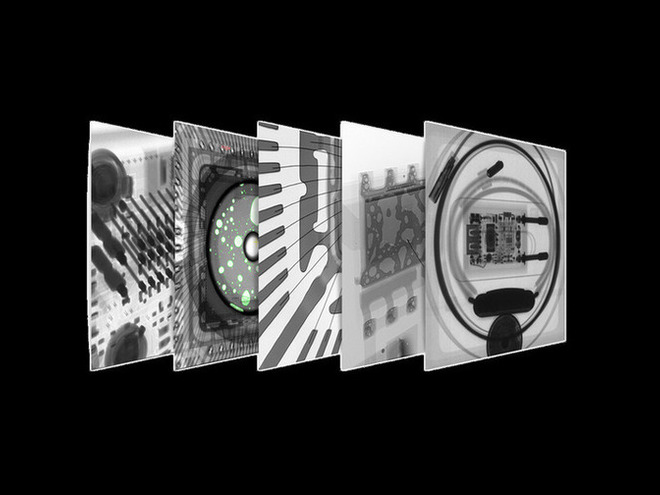Analysis of Artifacts in Industrial CT
Release time:2023-12-11Publisher:Jeenoce
Industrial CT technology is a visualization testing technique. The results of industrial CT scanning imaging can not only clearly and accurately reproduce the internal structure of the tested object, but also quantitatively provide the geometric dimensions of material density composition and internal details. It has been widely used in industry and medicine.
However, due to limitations such as technical principles and equipment hardware and software conditions, artifacts are inevitably generated in reconstructed images, resulting in decreased image uniformity and significant impact on quality. There are many types of artifacts, such as circular artifacts, edge artifacts, metal artifacts, scattering artifacts, etc., which are common artifacts; Among them, in the low-energy radiation industry, the beam hardening caused by the continuous spectrum of radiation causes artifacts in the reconstructed images, many of which lack obvious discontinuities and clear boundaries, making their recognition more difficult and prone to misjudgment by inspectors.

The cause of beam hardening in industrial CT scanning results is that the energy of X-ray industrial CT is continuous spectrum. High energy X-rays have strong penetration ability, while low energy X-rays have poor penetration ability. Low energy photons are more easily absorbed by materials than high energy photons. When penetrating the workpiece, the proportion of low-energy photons in the transmitted X-rays decreases, while the proportion of high-energy photons increases. The average energy of the beam increases, and the peak energy spectrum shifts to the right (the spectrum becomes harder). This phenomenon is called beam hardening. If the energy value of the ray is taken as the horizontal axis and the relative intensity is taken as the vertical axis, the transmitted ray spectrum shifts to the right relative to the peak value of the human radiation spectrum. Beam hardening can cause inconsistent measurement data. When scanning a cylindrical uniform workpiece, the CT value decreases with decreasing radius. In CT images, the gray value in the edge area is higher than that in the middle area, resulting in a "cup" shaped artifact, also known as cup shaped artifact. The discontinuity of cup-shaped artifacts is not obvious, there is no clear boundary, and recognition is difficult. Cup shaped artifacts are different from circular artifacts and edge artifacts, both of which have clearer boundaries.
The commonly used algorithm for studying and interpreting artifacts is polynomial fitting correction, which uses different correction functions for each detector channel at each projection angle. Due to the difference between the fitted line attenuation coefficient and the actual material line attenuation coefficient, the corrected projection force also deviates from the ideal value, and the standard deviation of the corrected image increases, amplifying the original noise. This is determined by the correction principle of linearization correction method and is an inevitable error. There are also some new methods. Compared with polynomial fitting, this method improves the correction algorithm in principle. For each graduation projection data, a hardening correction method is used by multiplying the weight function with the current graduation projection data. The standard deviation of the corrected image is slightly reduced, the noise is not amplified, and the signal-to-noise ratio is increased by more than three times. The correction effect is relatively ideal.
Analyzing the causes of cup-shaped artifacts in X-ray CT images, a weight function based hardening artifact correction method was used to obtain line attenuation coefficients for different thicknesses through a stepped model and projection data of the measured object. The hardening model support and weight function correction model functions were provided, and the weight function was determined. Correction experiments were conducted on actual CT images containing cup-shaped artifacts, and the results showed that compared with the most commonly used polynomial fitting method, there was no amplification noise after correcting cup-shaped artifacts on cylindrical workpieces. The signal-to-noise ratio of grayscale images was increased by more than three times, and the image boundary preservation effect was better. Of course, the current weight function is targeted at circular CT images, and different weight functions need to be selected to complete the correction algorithm for images with other geometric shapes, which is also the focus of the next step of research and implementation.
In addition to cup-shaped artifacts, there are also circular artifacts. In order to remove circular artifacts in industrial CT images, Professor Wang Jue et al. proposed a new correction method based on projected sine plots to improve the quality of CT reconstructed images and the accuracy of subsequent processing and quantitative analysis. Firstly, an S-L filter is used to filter the original projection data and enhance the artifact information. Next, perform line integration on the filtered projection data and use differential processing to further increase the difference between artifacts and the contour of the workpiece. Then, the difference projection data is interpolated and averaged according to the number of interpolation times, and the position for automatically searching for artifacts is selected based on the normal distribution. Finally, a combination of linear interpolation and linear extrapolation is used to correct the projection data at the circular artifact. Correction experiments were conducted on actual CT images containing circular artifacts, and the results showed that compared with correction methods based on polar coordinate transformation and wavelet FFT filtering, the corrected grayscale image signal-to-noise ratio gain of this method reached 1.688 dB, effectively eliminating circular artifacts while maintaining image edges and resolution. The correction effect for intermittent circular artifacts caused by detector failures or unstable performance is good.
The commonly used CT scanning modes for industrial CT include first generation scanning and third generation scanning, among which the third generation scanning has higher efficiency but is prone to circular artifacts due to poor correction methods. Therefore, reducing or eliminating circular artifacts is one of the main contents reflecting the technical level of CT system manufacturers.

